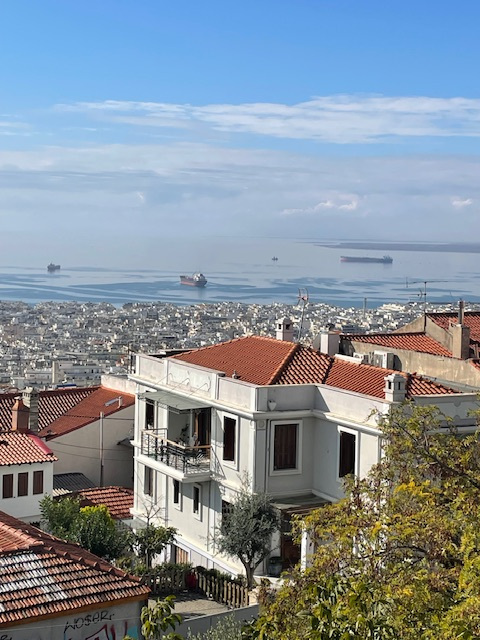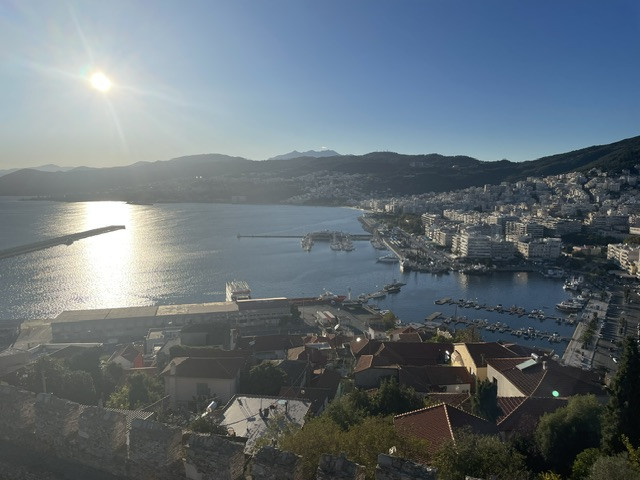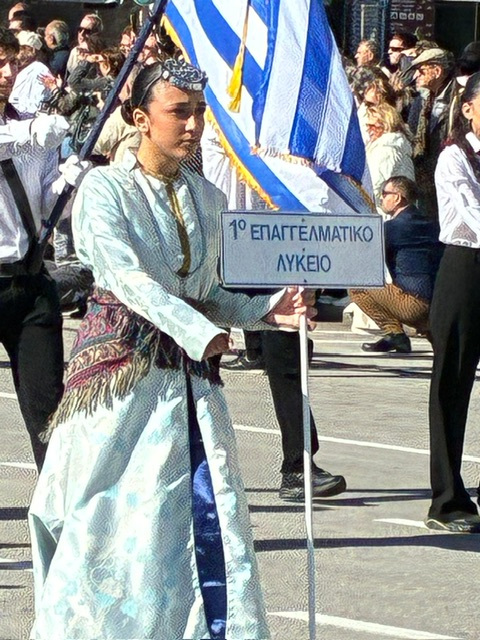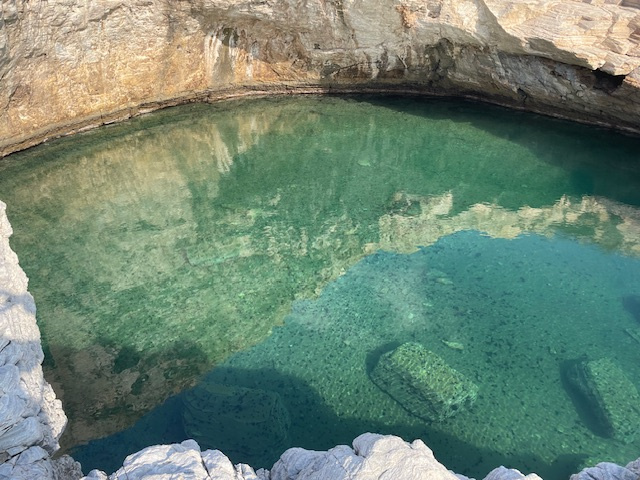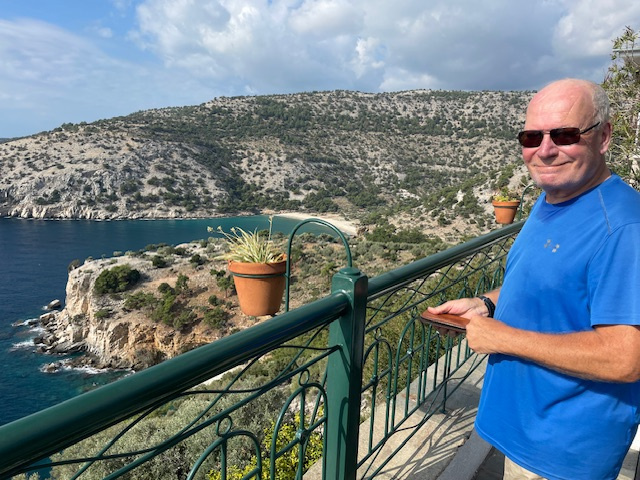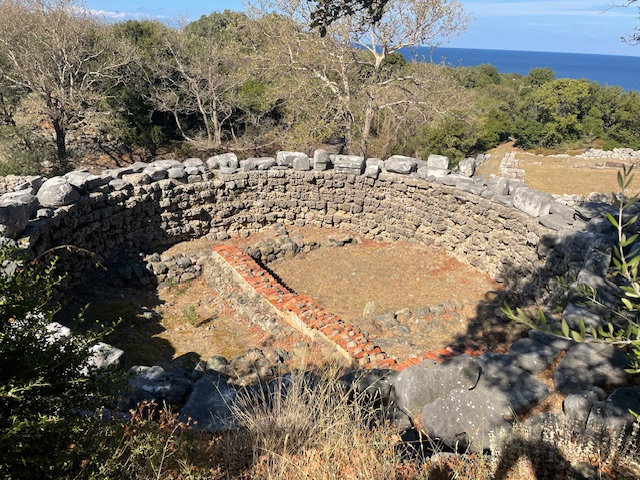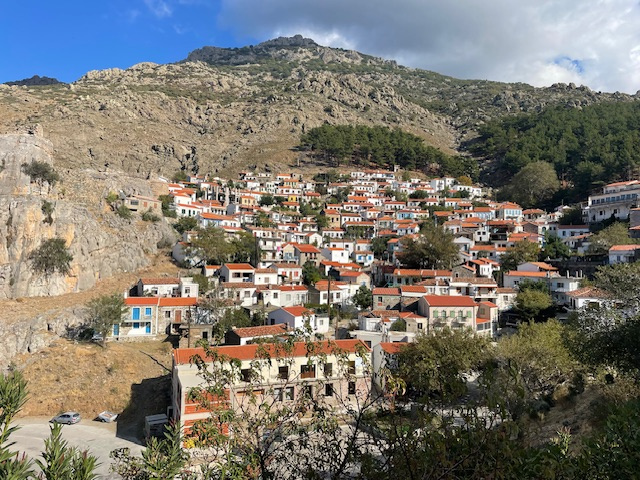
Now that Aglaya is safely moored in the boatyard, we treat ourselves to a dessert on land. Thessaloniki, the capital of Macedonia, where we recently spent so much time sailing, is Greece's second largest city with a population of around three million. It has always been the second largest city – even in the Byzantine Empire after Constantinople. We definitely wanted to visit this lively yet relaxed city, which has been shaped by an eventful history. We had left our boat in the Aretsou marina just outside the city for two months in the summer to go home, but it was far too hot for us to explore the city. Now, in the cool November weather, we are perfectly situated in a tiny flat very close to the harbour.
First, we got an overview of the city on a sightseeing tour, then visited many of the sights by foot: the long harbour promenade to the White Tower, the statue of Alexander the Great and the Umbrellas. In the city, you come across churches at short intervals, large and small, each with its own saint and its own history. The most famous is the large Agia Sofia. We were fascinated by the fact that they all stand in the middle of the tightly packed high-rise buildings. The remains of the Roman buildings are also impossible to miss in the middle of the city. The Arch of Galerius and the Rotunda of Galerius are particularly striking. Unfortunately, we could only view the Bey Hamam from the outside, as it is dilapidated and therefore closed. What a pity! A large part of the city was destroyed in a major fire in 1917, and an earthquake in 1978 caused a great deal of damage.
Here in Thessaloniki, it became clear to us once again how much the history of the Levant has been shaped by war, displacement and migration. For example, the history of the Jews has been closely intertwined with the history of Thessaloniki since its founding as the capital of the Macedonian kingdom. And although we know about the atrocities committed by the Nazis in Greece during the Second World War, we were once again deeply moved when we stood in front of the sculpture commemorating the Holocaust. Almost 50,000 Jewish citizens from Thessaloniki were deported in freight cars to the Auschwitz and Treblinka concentration camps.

The Thessaloniki International Film Festival is currently taking place, which means there are a lot of visitors in the city. Many of the screening venues are located in the old harbour area. The warehouses also house museums. This was our favourite place to enjoy a draught beer in the evening, with a view of the Thermaic Gulf, where we also went sailing.
There are many young people in the city, certainly tourists, but mainly students. No wonder, as Aristotle University is the largest in the Balkans. The university's namesake lived here and has been immortalised with a statue.

After morning coffee (‘two Greek coffees, medium sugar’), a walk through the market halls was a great start to the second day.
And then the more athletic part of the day: climbing up to the upper town with its densely packed little houses with red tiled roofs, the city walls and the castle. The view down to the city, the harbour and the gulf is magnificent. The sun is finally back, but Mount Olympus, which can be seen from here on a clear day, is shrouded in clouds.
We have one last evening ahead of us before we fly home tomorrow. Perhaps we'll go back to the market halls for a delicious Greek dinner.
And then it's winter break!



























